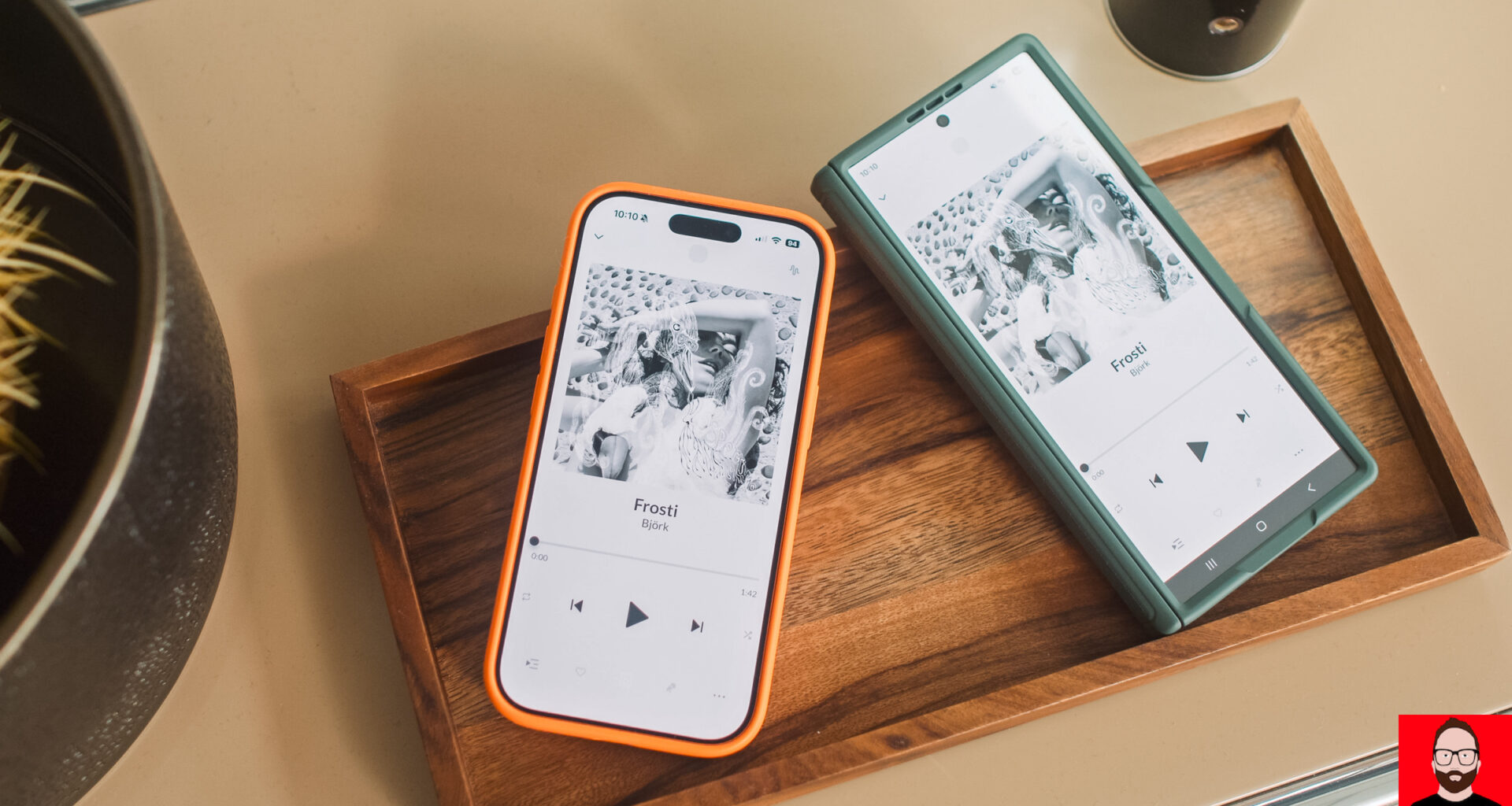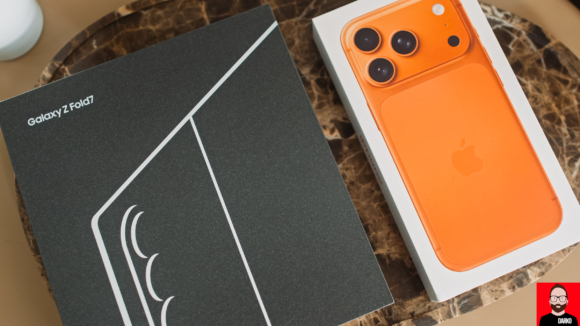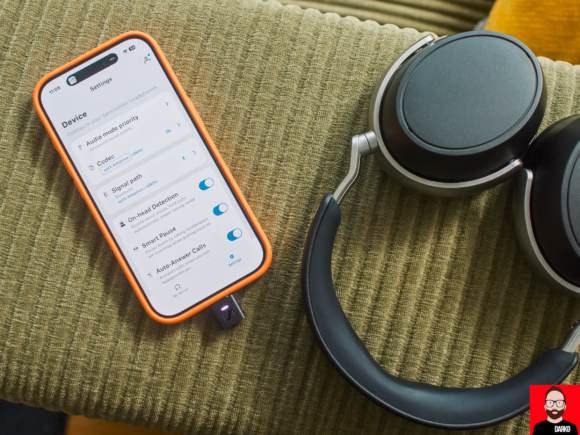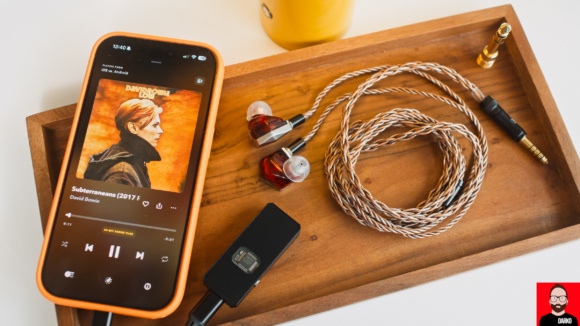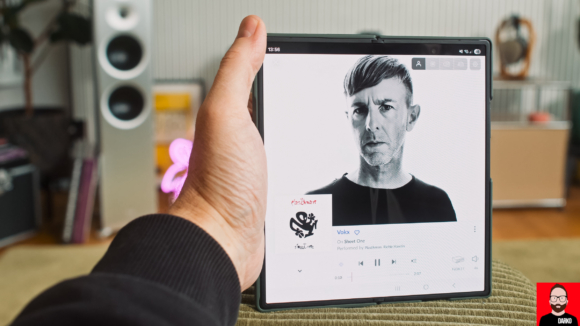Last month, I spent a total of €2600 on two different high-end smartphones – not for the cameras, the AI integration or the processors, but to answer one simple question: which one best serves the audiophile?
The Samsung Galaxy Z Fold 7 and iPhone 17 Pro each cost €1300 in Germany – that’s roughly US$1400 a pop. And no, I don’t have contacts at Samsung or Apple who would send me review loaners. I bought both with my own money because audiophiles remain a tiny subset of smartphone users. We don’t matter to Google or Apple, but that doesn’t stop us from obsessing over which phone handles our music better.
Now, before any stroppy teenagers start yelling inanely about ‘Fanboi-ism’, ‘Crapple‘ or ‘Sheeple‘, know that I am genuinely torn between these two smartphones. If it were an easy decision, I wouldn’t have bought both. The €2600 outlay wasn’t about platform loyalty or brand worship – it was about finding real answers to real questions that matter to those of us who treat our smartphones as music sources or remote controls.
After a month of side-by-side testing, I’ve evaluated both smartphones from three different perspectives: as Bluetooth sources, as wired headphone sources (obviously using dongle DACs), and as streaming interfaces. And the results are more complicated than you’d expect.
Bluetooth headphones
Right out of the gate, the iPhone 17 Pro gets something that Samsung cannot touch: seamless AirPod integration. The controls aren’t loaded into an installable app like other headphone brands – they’re baked directly into iOS. And for phone calls, the AirPods Pro 2 and 3 remain untouchable. Furthermore, the Pro 3’s active noise cancellation beats everything I’ve heard to date, though Apple’s tweaked the frequency response of the Pro 3 with slightly elevated bass and treble, which makes the midrange sound a little reluctant. How much you’ll notice that depends on how loud you listen – Fletcher-Munson curve correction means the smile-shaped EQ becomes more pronounced at lower volumes. Apple’s DSP is clever here, but it also makes the AirPods Pro 3 a moving target for anyone trying to discuss measurements. And I’m sure I read somewhere that Apple has already subtly altered the Pro 3’s frequency response with a post-launch firmware update.
But here’s where the iPhone stumbles: it’s still restricted to the AAC and SBC codecs. That’s it. Got a pair of Sennheiser HDB 630 with aptX Adaptive? A Bowers & Wilkins PX8 S2 with aptX Lossless capability? The iPhone won’t play ball: it’ll stream via AAC to either one.
The sonic differences between codecs are small but audible. Using Sennheiser’s BTD 700 USB dongle (which supports aptX Adaptive) versus the iPhone’s built-in AAC, Neil Young’s “Ambulance Blues” sounds flatter through the iPhone with less treble refinement and compressed spatial qualities. The BTD 700 opens up the song’s dimensionality and dials back upper-treble distortions. Yes, it’s an extra dongle to remember, easy to misplace, and I worry about snapping it off the USB socket if I sit down wrong. But the improvement is there.
The Samsung Z Fold 7, like all Android smartphones, comes pre-loaded with LDAC for Sony WH-1000XM series compatibility. The Samsung foldable also includes the original aptX codec: not aptX Adaptive or aptX Lossless, just regular aptX.
You gotta be careful here! Don’t believe the talk about aptX Adaptive being hi-res capable. It’s a lossy codec that will play 24-bit/96kHz streams, but not before compressing ’em to roughly one-fifth of their original size to fit down the Bluetooth pipe. That’s fine for most situations, but listening to Boards of Canada through the Sennheiser HDB 630, there’s just not enough audible daylight between Samsung’s aptX and the BTD 700 dongle’s aptX Adaptive to make me worry about leaving the dongle at home.
But wait. The Bowers & Wilkins PX8 S2 supports aptX Lossless, which promises CD-quality streaming over Bluetooth. And yet the Z Fold 7 doesn’t support it. Neither does the iPhone 17 Pro (or any iPhone). So we’re back to dongles for both smartphones if we want that theoretical best-case Bluetooth performance when streaming Cocteau Twins’ Four-Calendar Café in CD quality.
But here’s the thing: aptX Lossless isn’t worth the squeeze over standard aptX for me if it means parking a dongle in your smartphone’s USB socket. The sonic improvements are marginal at best – harder to hear than the jump from AAC to aptX Adaptive – and you’re trading convenience for a tiny audible advantage. I’d rather leave the dongle at home and accept standard aptX’s very capable lossy compression. I don’t see why Samsung didn’t spring for aptX Lossless when Sony and Asus do.
All this to say, Android’s Bluetooth codec support is a hot mess of confusion, but even with the lossy compression complexities of Qualcomm’s various aptX codecs, the Z Fold 7 has the edge over the iPhone 17 Pro for non-AirPod headphones. And we should always keep in mind that a headphone’s hardware has a much greater impact on what we hear than any of these codec differences.
Wired headphones
Neither the iPhone 17 Pro nor the Samsung Z Fold 7 has a headphone socket. You knew that already. For wired headphones, we need a dongle DAC. I’ve been using the Campfire Audio Relay lately, though what follows applies to any USB DAC.
And this is where the iPhone pulls ahead decisively. The iPhone 17 Pro, like all iPhones, sends audio bit-perfectly out of its USB-C socket. Play a 16-bit/44.1kHz stream? It arrives at the DAC as 16-bit/44.1kHz. Play a 24-bit/96kHz file? Same deal – 24-bit/96kHz at the DAC. iOS doesn’t mess with the digital audio stream.
Android does mess with it. The Samsung resamples everything to 48kHz. That 24bit/96kHz file becomes 24bit/48kHz. Your carefully ripped CD collection at 16bit/44.1kHz? Now it’s 16-bit/48kHz. How audible is this resampling? That’s hotly debated in audiophile circles, but the purists detest it.
The workaround involves apps that bypass Android’s resampling algorithm. Roon ARC can talk directly to the dongle DAC once you activate its USB driver in the settings. Suddenly, you’re getting bit-perfect playback on Android, plus options for crossfeed, volume levelling and headphone correction. But you shouldn’t need third-party apps to achieve on Android what iOS does natively.
If iOS developers can deliver bit-perfect audio, Android’s could too – if they wanted to.
Control surfaces
This is where things go a little off-piste. The iPhone 17 Pro offers the typical smartphone experience: portrait-oriented display, familiar navigation, nothing revolutionary. It works well.
The Samsung Galaxy Z Fold 7 is a different animal. Open it up and suddenly you’re holding a mini-tablet. Most streaming apps take advantage of the extra screen real estate, and it’s an utter joy to use. Roon, Plexamp, Apple Music – they all transform into magazine-like experiences. Album art becomes art again, not just postage-stamp-sized thumbnails.
I use the fold-out screen far more than expected, even on the U-bahn. Yes, it makes me look like an audio wanker – big headphones, big smartphone, browsing Brian Eno B-sides. It’s not like flipping through a crate of vinyl, but it is as satisfying as streaming control can be in 2025.
And for this smartphone comparison, I didn’t make a playlist to listen to. I made a playlist of songs pulled from albums with iconic album covers: Bowie’s Low, Cocteau Twins’ Four-Calendar Café, Boards of Canada’s Music Has the Right to Children, Björk’s Vespertine, Eno’s Another Green World and Neil Young’s On the Beach. Apple Music even animates the waves on that Neil Young cover – such a nice touch.
Roon Remote needs work here, though. Switching between the Z Fold 7’s open and closed modes demands a complete app restart. And Roon ARC’s ‘now playing’ cover art display could be bigger too. This is one area in which Plexamp one-ups it. But I’m sure Roon will have these issues licked soon enough. After all, they are now owned by Samsung.
Trade-off matrix
After a month with both smartphones, I still can’t pick a clear winner. The iPhone 17 Pro delivers clam-tight AirPod integration and bit-perfect USB audio output without any fuss, but it won’t do anything but AAC with headphones from Sennheiser and Bowers & Wilkins. For someone deep in the Apple ecosystem with AirPods Pro and a dongle DAC collection, it’s the obvious choice.
The Samsung Galaxy Z Fold 7 counters with better-sounding Bluetooth codecs for non-Apple headphones and that absolutely glorious fold-out display for music browsing. Android’s resampling is annoying, but, for all but hi-res fanatics, it is easy to ignore. And if you’re worried about the Samsung hinge’s fragility, I won’t call you a boomer. Just go watch JerryRigEverything stress-test it in ways you cannot imagine. It holds up fine.
Essentially, both of these smartphones make compromises that shouldn’t exist at this price point. Neither one is the perfect fit for every audiophile. You’ll need to choose the compromise/s you’re best prepared to tolerate.
And your final choice, should you have one, will largely depend on your existing gear. If you’re an AirPods user who occasionally uses wired headphones, you want the iPhone 17 Pro. If you own Bluetooth headphones made by the likes of Sony, Bowers, Focal, T+A, Sennheiser or Mark Levinson and you have a vinyl-collector’s appreciation for album art, you’ll probably want the Samsung Galaxy Z Fold 7.
Want the best of both worlds? You’ll need to buy both and feel slightly ridiculous about it, as I did. Not to mention excessive.
The real answer might be to wait for a smartphone that does everything right. But knowing the smartphone industry’s attitude toward audiophiles, we’ll be waiting forever. We’re still a vanishingly small niche of power users, and they know we’ll buy their smartphones anyway.

